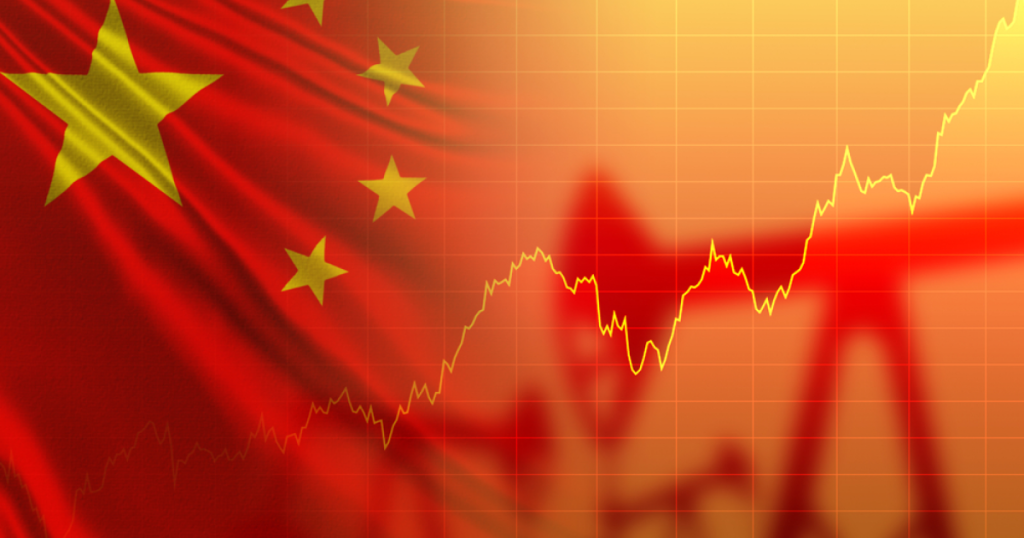Introduction: A New Phase for China and the World
China, long regarded as the locomotive of global growth, is entering a markedly slower phase. The aftershocks of its economic deceleration are already reverberating through global markets, from commodity prices to technology stocks. Investors who once bet heavily on China’s insatiable appetite for raw materials, consumer goods, and tech innovation are now recalibrating strategies. To navigate 2025 and beyond successfully, understanding the latest export data, PMI trends, and consumer activity levels is crucial. More importantly, assessing how China’s slowdown reshapes global commodity and tech sectors will be essential for both risk management and opportunity identification.
Export Data: A Window into China’s External Weakness
China’s export machine, which for decades drove its rapid GDP expansion, is sputtering. Recent customs data reveals consecutive months of year-over-year export declines, particularly in key sectors like electronics, machinery, and textiles. Exports to major partners like the United States, Europe, and Southeast Asia have weakened, reflecting both global demand softness and the relocation of supply chains. Notably, exports to ASEAN countries—once a bright spot—have decelerated sharply, highlighting broader regional demand weakness. Factors such as tariffs, geopolitics, and friendshoring trends are exacerbating the decline. Export contractions have traditionally been a leading indicator of China’s broader economic struggles, suggesting that the slowdown is neither isolated nor temporary.
PMI Trends: Manufacturing and Services Tell a Troubling Story
Purchasing Managers’ Index (PMI) data offers another critical lens into China’s economic health. The manufacturing PMI has frequently dipped below the 50 threshold, indicating contraction rather than expansion. Weakness is broad-based, spanning traditional heavy industries as well as newer tech-oriented manufacturing. Even the services PMI, which had been a resilient part of China’s economy post-COVID reopening, is showing signs of fatigue, slipping toward stagnation. A sluggish services sector, given its rising share of China’s GDP, underscores the depth of the current slowdown. These PMI trends collectively point to a lack of both external and internal demand, compounding the risks facing China’s economy and those intertwined with it.
Consumer Activity Levels: The Missing Engine of Growth
Domestic consumption was expected to be China’s growth engine as it transitioned from investment- and export-led development. Yet, consumer activity data paints a worrying picture. Retail sales growth has been inconsistent and underwhelming, particularly in big-ticket categories like automobiles, electronics, and luxury goods. Youth unemployment remains persistently high, suppressing spending by a critical demographic. Real estate—a cornerstone of household wealth and sentiment—is in deep distress, further undermining consumer confidence. Online shopping, previously a bastion of resilience, has also cooled notably. The government’s stimulus measures have been cautious and narrowly targeted, failing so far to ignite a broad consumer revival. Without a strong rebound in domestic demand, China’s slowdown risks becoming self-reinforcing.
Impact on Global Commodity Markets
China’s role as the world’s largest consumer of commodities means its economic troubles are cascading into global commodity markets. Iron ore prices have slumped as Chinese steel production contracts. Copper, often considered an economic bellwether, has seen price volatility tied closely to Chinese industrial activity. Energy markets, too, are feeling the pressure; while oil demand has held up somewhat due to post-COVID travel recovery, long-term forecasts are being revised downward. Agricultural commodities are not immune either, with Chinese imports of soybeans and corn showing signs of strain. For investors, sectors and countries heavily reliant on commodity exports—such as Australia, Brazil, and parts of Africa—are increasingly exposed to downside risks linked to China’s slowdown.

Impact on Global Technology Stocks
Beyond commodities, technology is another critical sector feeling the ripple effects of China’s deceleration. Semiconductor companies, many of which depend on Chinese manufacturers for a significant portion of their revenues, have issued cautious outlooks. Consumer electronics firms face headwinds as Chinese demand for smartphones, laptops, and gadgets weakens. Even cloud computing and enterprise tech providers are reporting slower sales in China, reflecting a broader hesitance among Chinese businesses to invest in new technology amid economic uncertainty. Additionally, ongoing regulatory pressures in China’s domestic tech sector further chill the landscape, discouraging both innovation and capital investment. Investors with heavy tech exposure need to factor in China-related risks more acutely than in past years.
Key Economic Data to Watch in 2025
For those tracking China’s trajectory, several data points will be pivotal in 2025. Monthly export figures and detailed breakdowns by sector and geography will offer the earliest signals of external demand shifts. PMI readings, particularly new orders and employment components, will highlight whether manufacturing and services sectors are stabilizing or worsening. Retail sales growth, especially in discretionary categories, will reveal the true state of consumer sentiment. Fixed asset investment data will shed light on the government’s willingness to stimulate the economy through infrastructure and industrial policy. Real estate sales and prices will remain critical barometers of household confidence. Monitoring these indicators closely will be essential for anticipating China’s economic path and the knock-on effects globally.
Policy Responses: Will Beijing Step Up?
One major uncertainty is the extent and nature of China’s policy response. So far, authorities have refrained from massive stimulus, wary of reigniting debt bubbles. Instead, they have pursued targeted measures like interest rate cuts, modest fiscal spending, and regulatory easing in sectors like property. However, if economic data continues to deteriorate, larger interventions could materialize. Infrastructure spending, consumer subsidies, and even broader monetary easing are possibilities. For global markets, such stimulus would be a double-edged sword: providing short-term relief but potentially exacerbating long-term structural vulnerabilities. Investors should remain alert to shifts in Beijing’s policy stance, as sudden announcements can trigger sharp market moves across commodities, currencies, and equities.
Winners and Losers: Sector and Country Impacts
Not all sectors and countries are equally exposed to China’s slowdown. Countries heavily dependent on commodity exports, like Australia and Chile, face significant headwinds. Meanwhile, economies less reliant on China—such as India, Mexico, and parts of Europe—may be more insulated or even benefit from supply chain reconfigurations. In equities, materials and energy sectors are vulnerable, while companies tied to emerging market consumer growth outside China may offer safer havens. In technology, firms with diversified revenue streams beyond China are better positioned. Defensive sectors like healthcare, utilities, and certain parts of consumer staples may also outperform in a risk-off environment triggered by deeper Chinese weakness.
Investment Strategies for Navigating China’s Slowdown
Investors looking to adapt portfolios to China’s evolving risks should consider several strategies. First, geographic diversification away from China-centric exposures can reduce portfolio volatility. Second, sector rotation into more defensive industries may provide stability. Third, focusing on quality companies with strong balance sheets and global revenue diversification is critical. Additionally, commodities investors should prepare for a more volatile environment and use tactical positioning to benefit from periodic price swings. Currency hedging strategies will also be essential, given the potential for renminbi volatility to spill over into global forex markets. Above all, flexibility and vigilance will be paramount as the China-related investment landscape evolves.
Expert Opinions: Divided but Cautious
Economists and strategists are divided on the severity of China’s slowdown. Some, like those at Goldman Sachs and JP Morgan, argue that while painful, the deceleration is a controlled and necessary part of China’s economic rebalancing. Others, particularly at more bearish firms like Nomura, warn of structural stagnation risks reminiscent of Japan’s lost decades. There is consensus, however, that China’s economic model must evolve—less reliant on real estate and heavy industry, and more driven by consumption and innovation. How quickly and effectively China can engineer this transition will determine not only its own future but also the trajectory of global markets.
Conclusion: A Critical Juncture for China and Global Investors
China’s slowdown is not a short-term blip but a fundamental shift with profound implications for global markets. From commodities to technology stocks, no asset class is immune to the tremors emanating from Beijing. By closely monitoring export data, PMI trends, consumer behavior, and policy responses, investors can better anticipate risks and reposition portfolios accordingly. While challenges abound, so do opportunities—for those nimble enough to adapt. As the world adjusts to a China that grows slower but remains massively influential, understanding this new reality will be essential for investment success in 2025 and beyond.













































